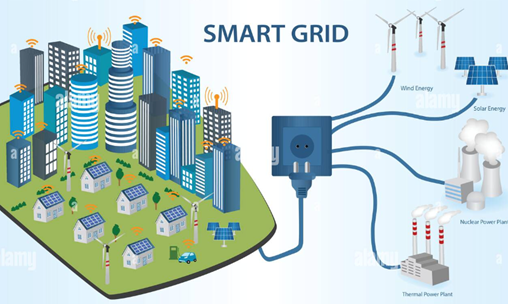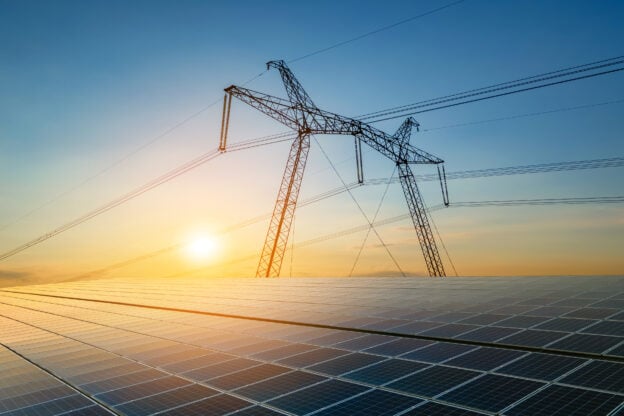Photovoltaic energy (PV) has its beginnings in 1839 with the definition of the photovoltaic effect by the young French scientist Edmund Bacquer. Since that discovery, the main objective of scientists has been to increase the efficiency of photovoltaic cells and their applications, and this is how in 1955 the production of photovoltaic panels for applications in space satellites began.
Although its invention and initial application was not carried out with the intention of using it as clean renewable energy, it is currently one of the best alternatives in the search for a sustainable energy transition to replace a good percentage of non-renewable fossil energy.
Power from solar panels has proven to be a promising renewable source, but its effective integration into power grids poses significant technical and economic challenges. This article examines the technical and economic challenges to integrate power (PV) to electrical networks, evaluating the obstacles and solutions for the feasibility of adopting this type of energy in electrical networks.
Challenges of integrating photovoltaic energy into electricity grids
1 Technical challenges
Intermittence and variability of photovoltaic generation
The most relevant challenge that it faces is the integration in the electrical networks, it is the inherent intermittency of this energy source. Photovoltaic generation depends on solar radiation and electricity can only be generated when the sun is shining. This means that it is not always available when it is needed, resulting in fluctuations in production throughout the day and in different seasons. These variations can create imbalances in the electrical network and threaten its stability.
These fluctuations in the production of intermittent renewable energy can create challenges for the electrical system, since the generated energy must be equal to the consumed energy at all times in order to maintain the stability of the system.
Solar energy is an intermittent source of energy. At the moment electricity can only be generated when the sun is shining. This means it won’t always be available when needed, making storage a huge challenge. If this energy cannot be stored, then it cannot be used when the sun is not shining.
Innovative solution: One solution lies in the adoption of advanced energy storage systems, such as high-capacity batteries. These batteries allow the accumulation of energy during the moments of maximum generation and its release when the generation is low. In addition, the combination of a solar source with other renewable sources, such as wind, can help to smooth out fluctuations and ensure a more constant supply, and it is also very important to adequately manage intermittent demand.
The most common energy storage is through batteries, thermal storage systems, and hydrogen. On the other hand, the interconnections of electrical networks allow distribution between regions with different renewable sources.
Integration to existing electrical networks
The existing electrical infrastructure is not always prepared to receive the energy generated by photovoltaic systems. The distributed and bidirectional generation that characterizes solar poses challenges in terms of control and management of the electrical network.
Innovative Solution: The implementation of intelligent control and automation technologies can facilitate the integration of photovoltaics into existing electrical networks. Advanced technology monitoring systems allow real-time monitoring of generation and consumption, which facilitates decision-making, to efficiently manage the network. In addition, microgrids enter the picture as an additional solution, allowing local generation and consumption in specific areas, thus reducing the load on main grids.
2 Economic challenges
Initial costs and long-term profitability
Despite declining costs for solar panels in recent years, the initial investment in photovoltaic infrastructure remains a barrier for many consumers and businesses. In addition, the perception of long-term profitability can influence investment decisions.
Innovative Solution: Financing models such as Power Purchase Agreements and solar leasing are an alternative that makes overcoming this obstacle more viable. These approaches allow consumers to access photovoltaics without the need for significant upfront investment. In addition, government incentives and subsidies can improve the economic viability of solar projects and accelerate their adoption.
3 Technological challenges
Electric grids have been conventional and unchanged for the past decade. Although solar energy systems provide a significant amount of electrical energy, the complexity of the electrical grid system and the improvements in panel efficiency remain a challenge for their interconnection.
Innovative solution:
- The use of intelligent network or smart grid. That is developed using devices, equipment, components and intelligent elements that monitor and measure each change in real time (See figure). The smart grid ensures the development of the electricity grid, having the capacity to respond to demand and balance electricity consumption with its generation, as well as having the potential to integrate new electricity storage technologies.
- Improved panels. Currently, work is being done on the investigation of various technologies, such as quantum holes, carbon nanotubes, dyed titanium oxide nanostructures (DSSC). With them you could create a painting that would cover houses or roads to generate energy. The efficiency of these systems could also be higher than current systems (between 30% and 60%).
- The use of nanoparticles with modified polymers to achieve more efficient and economic cells. This is based on several layers of nanoparticles that would take advantage of different types of light and the infrared spectrum.

4 Challenges for power grid operators
Currently installed electrical grid systems are conventional and adapting them to the new requirements will require monumental changes in the way systems are planned and operated, as power system reliability must be maintained, even when generation technologies fail. , energy flows and operating procedures undergo fundamental changes.
On the other hand, the massive adoption of photovoltaics may affect the financial stability of grid operators; which reduces the income from the sale of conventional electricity. This can put the proper operation and maintenance of the electrical grid at risk.
Innovative solution:
- Redesign a more flexible, efficient, and resilient energy system while accelerating decarbonization efforts.
- Integration of new technologies under old policies and processes, taking advantage of new transmission technology and integrating new hardware into the network. Innovative.
- Implementing dynamic rate models and more flexible pricing structures can help address the challenge. These approaches can better align energy supply and demand, incentivizing PV generation and consumption during optimal times and allowing for a gradual transition without compromising the financial viability of grid operators.
Conclusions
The successful integration of photovoltaic systems into electricity grids is necessary to achieve a sustainable energy transition. Despite the technical and economic challenges, the innovative solutions mentioned above are a viable path to a broader and more effective adoption of PV.
With a continuous focus on research and development, as well as favorable government and regulatory policies, the integration of photovoltaics into electricity grids is a great alternative in building a cleaner and more sustainable energy future.
References
Own source

